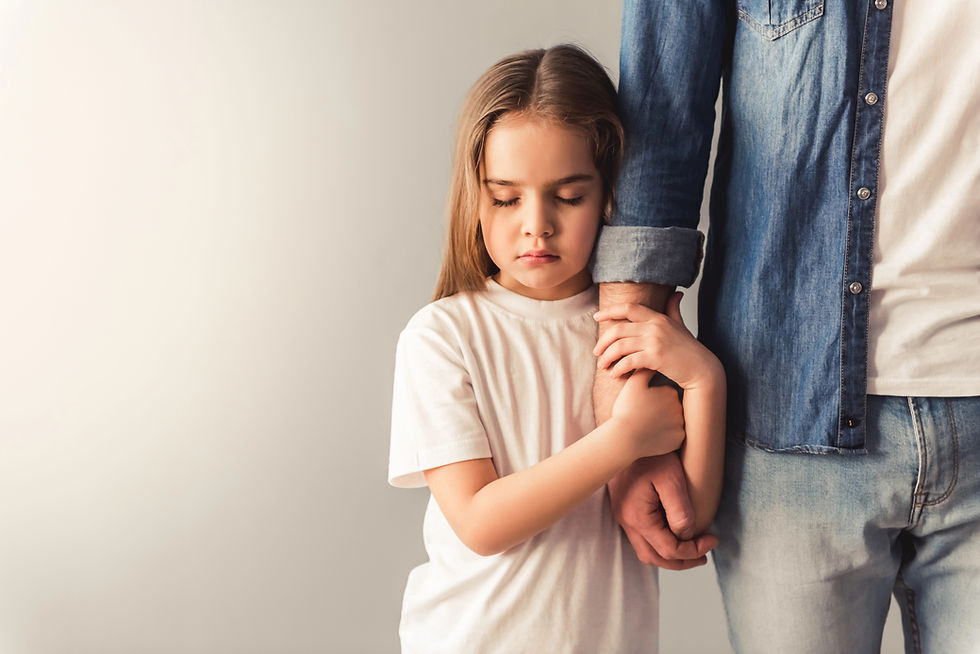“Don’t Leave Me!”
- Keren Dor
- Apr 24
- 3 min read
When a Child’s Anxiety Shows Up as Fear of Being Alone—And What You Can Do About It

It’s a situation I hear from many parents—and maybe you’ve lived it too.
Your child doesn’t want to be left alone. Not in their room, not while they play, not even to go to the bathroom. You find yourself being pulled into every small moment of their day, always needing to be nearby, just in case.
Sometimes, you’re standing beside them in the restroom, just so they don’t have to be alone. Other times, you’re sitting at the edge of their bed for what feels like hours. Or maybe they call out to you from another room every few minutes, just to make sure you haven’t gone too far.
And because you can see they’re truly afraid—not manipulating, not faking, but really scared—you stay. You want to help. You want them to feel safe.
But somewhere in the back of your mind, a quiet doubt creeps in:Are we stuck?Am I helping… or making it harder?
You might have tried to change it—offered rewards, encouraged independence, maybe even got a little tough. But nothing seemed to work. And now, you’re not sure what to do next.
So, what can be done?
This is one of those moments where change begins with the parent.
Your child is not choosing to feel this fear, and they can’t simply “snap out of it.” They need your leadership—calm, steady, and supportive.
Here’s a step-by-step path forward:
Understand That You Lead the Shift
Your child needs you to take the first step. That means gently initiating change even when it’s uncomfortable—for both of you. You're not leaving them to cope alone; you're guiding them toward independence, step by step.
Believe They Can Cope
You must first believe that your child is capable of overcoming this fear—especially when the environment is familiar and safe, like your home. Your belief in their resilience becomes a powerful tool they can draw from.
Encourage Independent Moments
Start noticing and celebrating any act of bravery or independence.Did your child go get something from another room? Did they wait a few seconds before calling for you? Praise those small moments:"That was brave of you!""You did it all by yourself!"This builds confidence and motivation.
Choose One Clear Step Forward
Select one specific situation to shift—like using the restroom alone.Tell your child ahead of time:"I know this has been hard, but from now on, I’ll wait for you just outside the hallway while you go in by yourself."
Let them express their frustration or fear—but hold the boundary calmly. You’re still there. You’re still supportive. But you’re also showing them that they can do hard things.
Support Through the Struggle
When your child feels scared or upset, acknowledge it without rescuing:"It feels scary right now, I understand. And I know you can handle it. I’m right here."
When the moment passes—and it will—help them notice what they accomplished:"You were scared, and you did it anyway. That’s real courage."
One Step Leads to the Next
After your child succeeds once, it becomes easier to take the next step. You can apply this same approach to going to bed alone, playing independently, or entering rooms by themselves. Bit by bit, confidence grows—and so does freedom, for both of you.
You are the anchor your child needs
Parenting a child with anxiety is not about pushing them too far or expecting immediate results. It’s about showing them—consistently and gently—that the world isn’t as scary as it feels, and they are stronger than they think.
When you lead with calm confidence, your child begins to believe it too.
💜
Keren Dor
ElemenTree Parenting


Comments